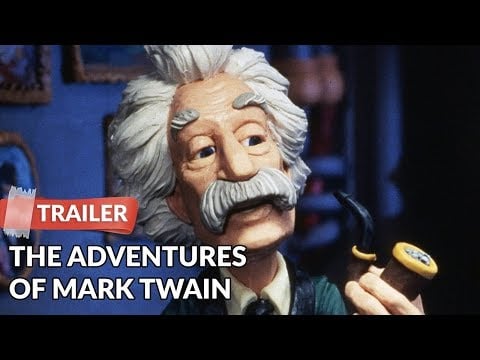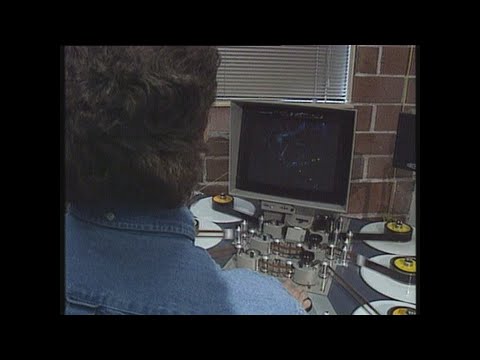Will Vinton’s “The Adventures of Mark Twain” (1985) is the only film to be made entirely in Vinton’s patented “Claymation” technique and remains a one-of-a-kind animated film. Vinton was already an Oscar winner for his short films. “Closed Monday” was Vinton’s breakthrough in 1974, an 8-minute stunner that resulted in the first Oscar ever given … The post How ‘Adventures of Mark Twain’ Rocked ’80s Animation appeared first on Hollywood in Toto.
Will Vinton’s “The Adventures of Mark Twain” (1985) is the only film to be made entirely in Vinton’s patented “Claymation” technique and remains a one-of-a-kind animated film.
Vinton was already an Oscar winner for his short films. “Closed Monday” was Vinton’s breakthrough in 1974, an 8-minute stunner that resulted in the first Oscar ever given to a stop-motion animated work.
By the 1980s, Vinton was building a reputation as an alternative animator in the age of Disney and Saturday morning cartoons. This movie, his only feature film, was a years-in-the-making showstopper that was intended to revolutionize his stop-motion brilliance to the mainstream.
While the film wound up a box office flop and Vinton’s massive commercial breakthrough came after (more on that in a moment), “The Adventures of Mark Twain” remains a little-seen but staggering discovery for lovers of unconventional animation.

It begins with a title card, reminding us of the arrival of Haley’s Comet, once a popular topic in the early 1980s (the comet returns in 2061). The wonder begins immediately, as the film is merely two minutes old, and we get the image of a book opening and the pages pouring into liquid visions that represent Twain’s vast imagination.
Once we settle into the sci-fi trappings and the odd fusion of semi-steampunk and Twain tales, the limitations and possibilities of Vinton’s technique are in plain sight. While the characters all sort of resemble bulky action figures, the facial expressions are amazing.
Vinton’s film presents a loving ode to both Twain and his works, albeit in a sci-fi presentation. Twain is depicted as both author and the captain of the massive airship. Huckleberry Finn, Becky Thatcher and Tom Sawyer all sneak aboard, as the airship ascends into the cosmos.
Twain hopes to immerse himself with the comet and kills time by telling the trio some of his best-known tales (none of which feature Tom, Huck or Becky, but are depictions from some of Twain’s most famous short stories).
As a conceptual fantasy intended to introduce audiences to Twain’s wit and storytelling, the concept is fun. I can envision similar films with this novelty. How about a haunted Stephen King locomotive or a Michael Crichton Island?

Vinton’s landmark film works for both Twain enthusiasts or anyone willing to be mesmerized by animation at a time when by-the-numbers kiddie fodder dominated the field. The exceptions? Don Bluth’s 1982 “The Secret of NIMH” and Ralph Bakshi’s output).
This is pre-Aardman Animation, playing in theaters the same year that Disney produced its notorious, tired flop, “The Black Cauldron.” Vinton was among the less mainstream innovators (such as Adam Elliot of “Memoir of a Snail” and Bill Plympton of “The Tune”) who were avoiding safe, cookie-cutter work and making animation that was personal, risk taking and defiantly different.
As a celebration of all things Twain, it’s worth mentioning that there’s no Jim, nor anything else here that courts controversy (Jim’s absence is understandable, though Twain completists might see that as a missed opportunity).
In addition to the frequent Twain quotes (such as “I became a writer…I haven’t worked a day since”), the vignettes that break up the story are funny and strange. The “Adam and Eve” sequence (which Vinton reportedly made first, in order to create a concept for the film around it) is wondrous, particularly in its depiction of God creating Earth and providing commentary.
(“This is nice…this is cute…”)

While the Adam and Eve sequence goes on too long and the satire is limp and dated, the technique is still stunning. The whole film is like this – even if the segments within the main story differ in maintaining interest, Vinton’s wizardry at making expressive performances and environments from clay is always captivating.
Many of the images are poetic, such as Adam first seeing Eve’s reflection in a pond. There are some jarring tonal shifts, such as the melancholy bit where Twain is spotted playing a pipe organ while tortured faces provide solemn accompaniment.
There’s also the eerie “Mysterious Stranger” sequence, a precursor to the still-wow inducing character work Vinton provided the magnificent “Return to Oz” (also in 1985).
There are surprisingly deep moments to be found, such as Twain ranting in a massive room containing stacks of his works. “The Adventures of Mark Twain” is episodic and jarring at times. Yet, even when the story loses momentum, the animation always amazes, and the brilliance of Vinton’s technique keeps it from capsizing.
Released by Funhouse Pictures but barely making a mark upon release (I remember the trailer but couldn’t find the movie playing anywhere during its original run), Vinton’s greatest successes came after.
While “The Adventures of Mark Twain” was eventually discovered by frequent airings on The Disney Channel, Vinton’s TV advertisements for “The California Raisins,” contribution to Michael Jackson’s “Speed Demon” music video (1989) and three seasons of the Eddie Murphy-led “The PJ’s” (1999-2001) are his most well-known accomplishments.
“The Adventures of Mark Twain” showcases the potential Vinton always knew was in his trademarked Claymation, shaping strange and gorgeous visions that offer dazzling, lifelike or dreamlike (or nightmarish) reflections of life, forged in clay.
The post How ‘Adventures of Mark Twain’ Rocked ’80s Animation appeared first on Hollywood in Toto.














